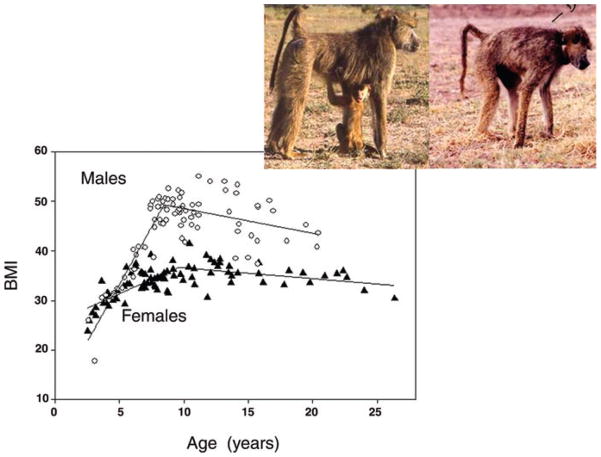Figure 5.
BMI increases for females (filled triangles) during early years of adulthood (until about 10 years of age, approximately 4 years after their first birth) and then declines very gradually during aging. Male (open circles) BMI increases more dramatically until attainment of adulthood (age 8 years) and then begins a more rapid decline than that of female BMI. Plotted lines are for best-fit piecewise regression model, providing a somewhat better fit for males (adj R2 = 0.76) and an equally good fit (adj R2 = 0.51) for females than a quadratic model. Pictured is a female during early adulthood and the same female at age 27, the oldest age yet recorded for wild baboons.

